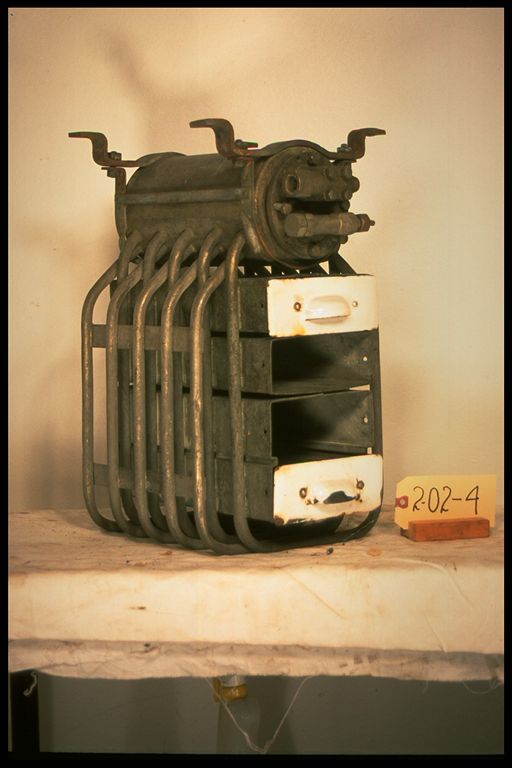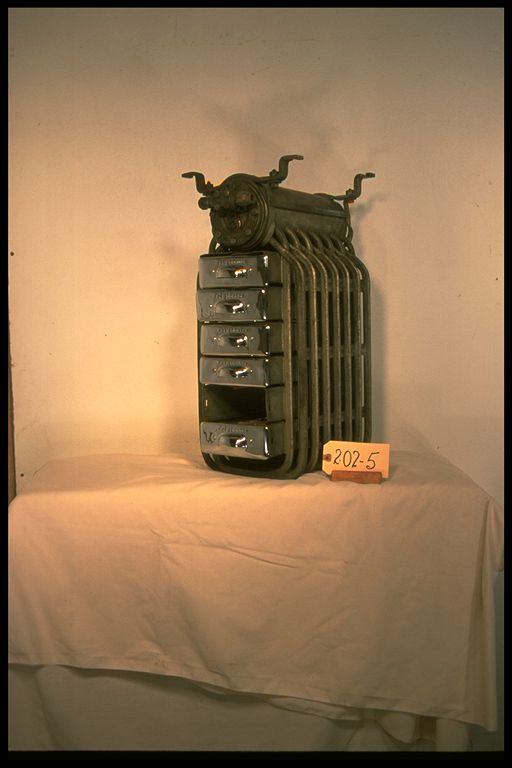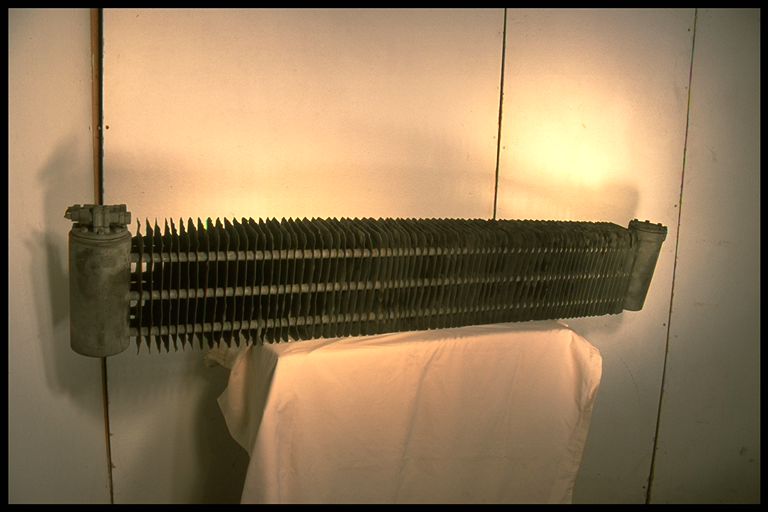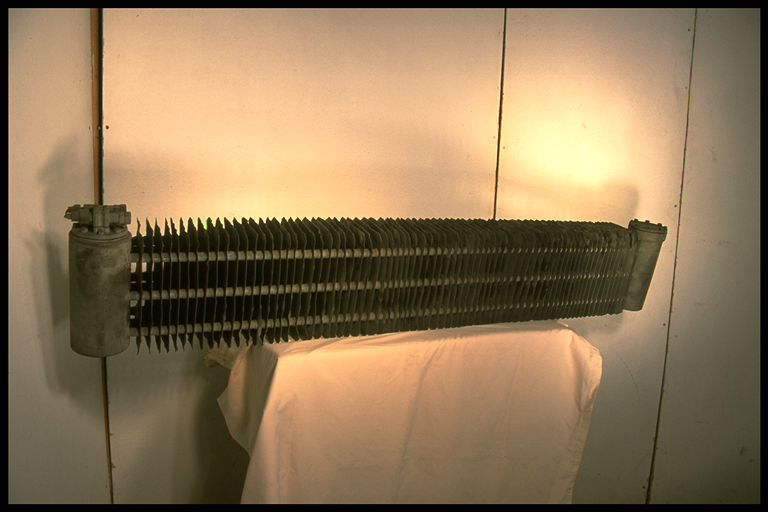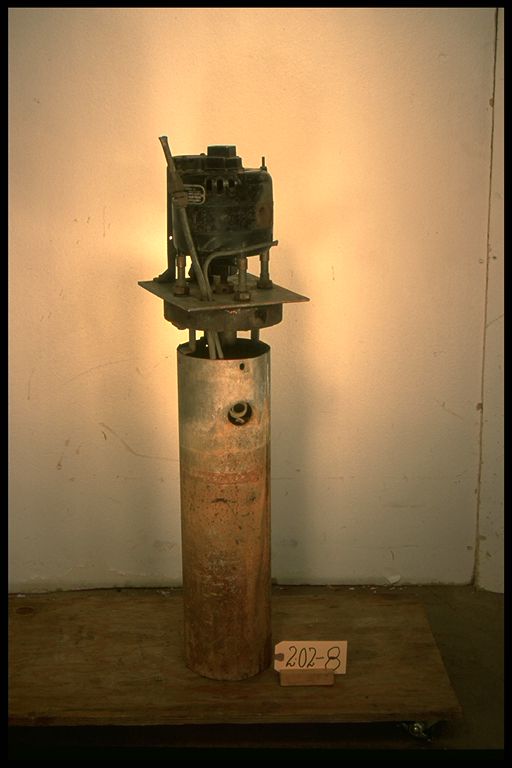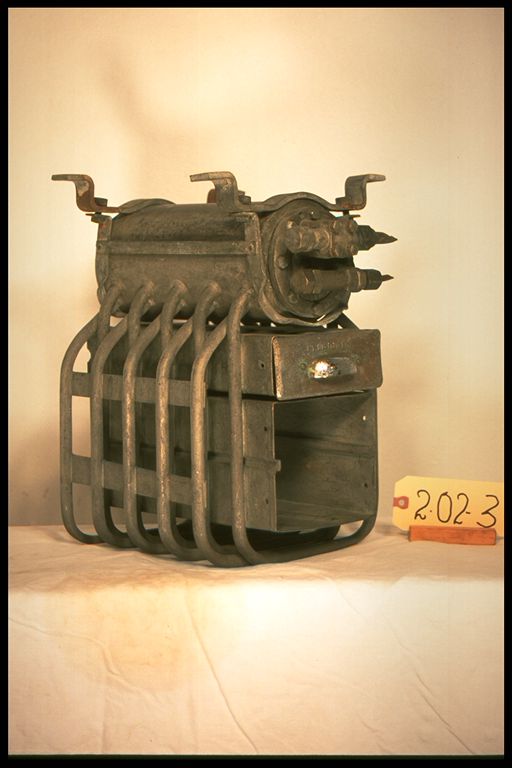2.02-1: 1926 Hand Made Plate and Tube Refrigerant Evaporator
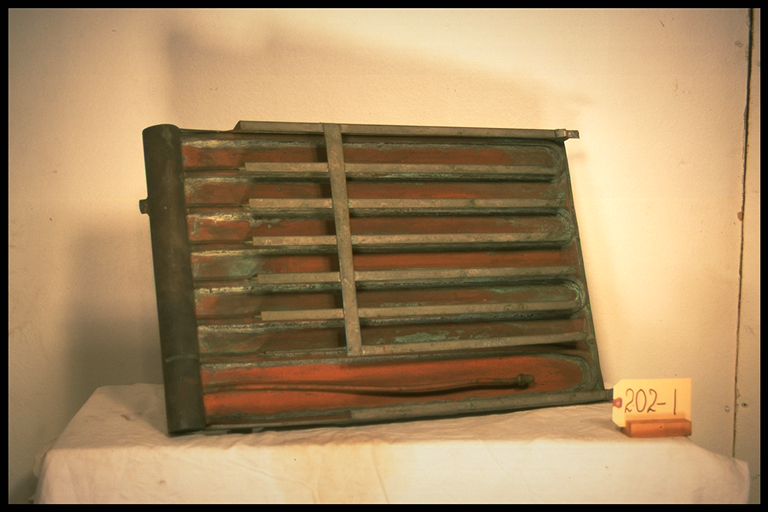
| HHCC Accession No. 2003.021 | HHCC Classification Code: 2.02-1 |
|---|
Description:
Early plate and tube refrigerant evaporator, fabricated in 3/8’ copper tube, with 2’x 16’ rolled copper header with soldered end plates and refrigerant access port; 2 ‘ tinned copper, brake formed fins, soldered to 16x 24’, brake formed, tinned copper backing plate,1926
Group:
2.02 Refrigerating and Air Conditioning Evaporators - Commercial
Make:
Hand made
Manufacturer:
Model:
Serial No.:
Size:
16x 26x 2’
Weight:
Circa:
1926
Rating:
A rare and unique artifact of the embryonic years of the Canadian refrigeration industry, exhibit, demonstration, education and research quality
Patent Date/Number:
Provenance:
From York County (York Region) Ontario, once a rich agricultural hinterlands, attracting early settlement in the last years of the 18th century. Located on the north slopes of the Oak Ridges Moraine, within 20 miles of Toronto, the County would also attract early ex-urban development, to be come a wealthy market place for the emerging household and consumer technologies of the early and mid 20th century.
This artifact was discovered in the 1950’s in the used stock of T. H. Oliver, Refrigeration and Electric Sales and Service, Aurora, Ontario, an early worker in the field of agricultural, commercial and consumer technology.
Type and Design:
Hand, made, designer built, one of a kind, believed to be a product of local tinsmith
Construction:
Constructed of 3/8’ copper tube, with 2’x 16’ roller copper header with soldered end plates and access port, with 2 ‘ tinned copper, brake formed fins, all soldered to 16x 24’, brake formed, tinned copper backing plate.
Material:
Special Features:
Accessories:
Capacities:
Performance Characteristics:
Operation:
Control and Regulation:
Targeted Market Segment:
Consumer Acceptance:
Merchandising:
Market Price:
Technological Significance:
Industrial Significance:
This historic relic is, in a sense, representative of the embryonic and earliest development years of any industri3es beginnings. It is here when those with skills, interests, tools and entrepreneurial energy find themselves captivated by the possibilities of the moment, striking out to see what successes are to be had.
The birth and early years of the Canadian HVACR industry would be characterised by just such adventurers, whether in heating, ventilation, air conditioning or refrigeration.
As carriage makers found themselves imagining themselves in the early years of the automobile business, so metal shops and mechanics would see in the earliest rumblings of HVACR possibilities and opportunities for new human experience, personal growth and development, as well as economic return for their efforts.
Socio-economic Significance:
Socio-cultural Significance:
Donor:
G. Leslie Oliver, The T. H. Oliver HVACR Collection
